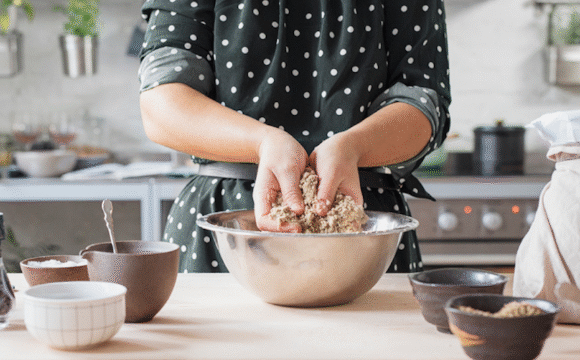Finding comfort is a natural human need. Everyone faces moments of stress, loneliness, or sadness, and it’s completely normal to want relief. However, turning to food for comfort often brings only temporary calm, followed by guilt or discomfort. The good news is that it’s possible to soothe yourself, manage emotions, and create a sense of peace without using food as the primary source of comfort. Developing new ways to care for yourself can help you feel more balanced, in control, and genuinely comforted.
One of the first steps to finding comfort without food is understanding why you reach for it in the first place. Food is deeply connected to emotions and memories. Maybe a warm bowl of soup reminds you of your childhood home, or a sweet treat feels like a reward after a tough day. These associations are powerful and understandable. The goal isn’t to deny the emotional connection to food, but to recognize when it becomes a coping mechanism rather than a form of nourishment. Once you become aware of your triggers, you can start to separate emotional hunger from physical hunger.
Emotional hunger tends to come on suddenly and feels urgent, while physical hunger builds gradually. When you are physically hungry, almost any food sounds appealing. Emotional hunger, on the other hand, often craves specific foods that provide immediate comfort. Recognizing this difference is a valuable skill because it allows you to pause and ask yourself what you truly need. Sometimes, what you’re craving isn’t food at all—it might be rest, connection, reassurance, or simply a moment to breathe.
When you notice that you’re tempted to eat for emotional reasons, try creating a moment of mindfulness. Pause for a few seconds and take a few deep breaths. Ask yourself what you’re feeling and what would genuinely comfort you right now. It might help to write your thoughts down in a journal or talk to a trusted friend. The act of naming your feelings often reduces their intensity and gives you a clearer sense of what would help most. For example, if you’re feeling anxious, maybe your body is asking for movement or fresh air. If you’re feeling lonely, perhaps you need human connection rather than a snack.
There are many comforting activities that can replace emotional eating while still providing real relief. Gentle exercise is one of the most effective. A walk outside, stretching, or slow yoga can calm your mind and release tension. Movement helps process emotions physically, allowing them to flow through instead of staying bottled up. Another powerful option is listening to music. The right song can shift your mood, lift your energy, or soothe you in moments of sadness. It’s a form of emotional nourishment that doesn’t involve food.
Creative expression is also deeply comforting. Drawing, painting, writing, or even rearranging a room can give you a sense of renewal and release. These activities engage your mind and hands in a way that channels emotions productively. If creativity feels intimidating, start small. You might color in an adult coloring book or write a short note to yourself about what you’re feeling. The point isn’t to create something perfect, but to express yourself in a healthy, kind way.
Another key part of finding comfort without food is nurturing connection. Humans are social beings, and emotional pain often eases when we feel seen and supported. Reach out to someone you trust, whether it’s a friend, family member, or support group. Talking about what you’re going through helps you process feelings and reminds you that you’re not alone. Even short interactions—like a warm message or a quick call—can create a sense of belonging that replaces the temporary comfort food often provides.
Rest is another form of comfort that is easy to overlook. When you’re tired, your body and mind crave restoration, and sometimes that tiredness can disguise itself as hunger. Giving yourself permission to rest—through a nap, quiet time, or simply doing nothing—can meet that need directly. In a busy world, pausing can feel like a luxury, but it’s actually a necessity for emotional balance. When you rest without guilt, you teach yourself that comfort doesn’t have to come from eating.
Self-soothing through the senses can also be an effective way to feel comforted without turning to food. Try wrapping yourself in a soft blanket, taking a warm bath, lighting a candle, or using calming scents like lavender or vanilla. Sensory comfort reminds your body that you’re safe and cared for. When your senses are gently engaged, the urge to eat for comfort often fades because your body feels nourished in another way.
Building a routine of small comforting habits strengthens your ability to cope with emotions constructively. The next time you feel stressed or upset, instead of reaching for food automatically, pause and try one of your alternative comfort tools. Over time, these small moments of awareness create a powerful shift. You start trusting yourself more and realizing that comfort doesn’t have to come from your plate. It can come from your choices, your breath, and the ways you treat yourself kindly.
It’s also important to approach this process with patience and self-compassion. If you find yourself turning to food for comfort again, that’s okay. There’s no need for guilt or judgment. Changing emotional habits takes time, and every moment of awareness is progress. The goal isn’t perfection—it’s understanding yourself better and gradually building a kinder relationship with your emotions and with food. When you approach each moment with curiosity rather than criticism, you create space for real change.
Over time, as you discover more ways to care for yourself, food takes its rightful place as nourishment rather than emotional support. You may find that you enjoy eating even more because it’s no longer tangled with guilt or emotional pressure. You can savor meals, appreciate flavors, and listen to your body’s natural cues with a clearer mind. This balance allows you to experience both emotional peace and physical well-being.
Finding comfort without turning to food is about learning to meet your true needs with kindness and creativity. It’s about recognizing that emotions are not enemies to silence but signals asking for care. When you listen to those signals and respond with compassion, you strengthen your emotional resilience and build a life that feels balanced and fulfilling. Comfort then becomes something deeper and more lasting—a sense of inner calm that doesn’t depend on what’s in your kitchen, but on the love and understanding you offer yourself.






